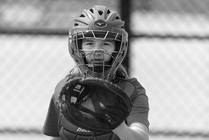Search Results
Viewing: 471-480 of 1457 | All

Condition
Spleen Injury
This Helping Hand™ covers spleen injuries. Due to where the spleen is in the body and its size, it can get injured easily. Learn what to expect if your child has a spleen injury.

Condition
Perioral Dermatitis
In this Helping Hand™ document, we discuss perioral dermatitis, which is a common dry or bumpy rash that can occur around the mouth, the nose and the eyes. To treat the rash, it is important to stop using any topical steroids. Instead, your child’s doctor may prescribe topical or oral antibiotics.
Article
Bone Health in Cerebral Palsy
Children with cerebral palsy (CP) and limited weight bearing have a high risk of having fragile bones. This is because bones need activity like walking, running, and jumping to make them strong.

Condition
Sports Medicine: Low Back Strain/Sprain
The low back is a complex structure of bone and muscle that is supported by cartilage, tendons, ligaments, and fed by a network of blood vessels and nerves. Certain motions, such as bending, twisting or lifting, can sometimes lead to a low back strain or sprain.
Article
Cleft Lip Repair
Your baby's cleft lip has been repaired. There are a few things to know about his or her care at home.
Volar Plate Injuries
The volar plate is a thick ligament that connects two bones in the finger. A volar plate injury is commonly called a jammed finger or sprain. This happens when the finger is bent backward too far (hyperextended). These injuries can also lead to a fracture (break) called an avulsion fracture.
Article
Somatic Disease Germline Comparator Sequencing
You or your child will be having a genetic test called somatic disease/germline comparator sequencing. This test looks for changes in DNA that could cause or contribute to a medical condition.
Article
Safe Storage
Lockboxes can be used to safely store dangerous items like guns (firearms) and medicines.
Article
Developmental Milestones
Nationwide Children's Hospital provides a number of resources, including videos, to help you better understand your NICU baby's milestones and stay involved in his or her developmental care. Read and watch what to expect.
Immune Thrombocytopenia (ITP)
Immune thrombocytopenia (ITP) happens when the body destroys its own platelets. Platelets are a kind of blood cell that help the blood to clot after a person gets cut or bruised. A child with ITP may have a platelet count of less than 1,000.
